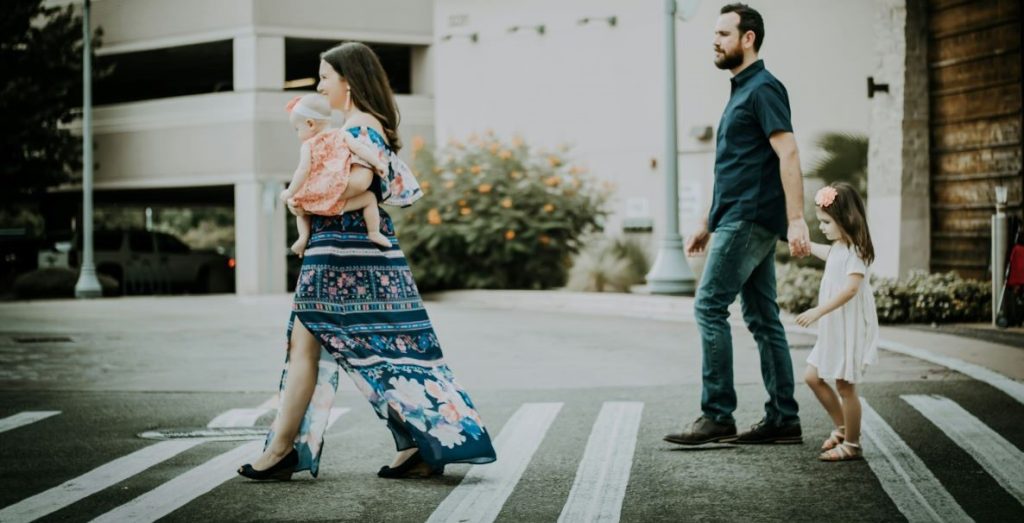In her election night acceptance speech, Mayor Cherelle Parker said that advisers warned against making too much of the fact that she was a divorced, single mother. Instead, she leaned into that perspective, crafting policies that reflected her understanding of the difficulties of raising a child in the city.
For example, her proposal of a longer school year and schools that are open longer hours each day, was intended not only to improve education, but reduce the burden on parents juggling work and childcare. That parent perspective is needed across so many other departments in the city — transportation, Parks and Rec, planning — to make this city better for all of us raising kids here.
Because like so many cities, Philadelphia is not what you would call kid-friendly. Last April, the Fashion District banned unaccompanied minors after 2pm after a series of flash mobs there. Days later a 15-year-old child was shot and killed at a North Philadelphia rec center — one of the 14 rec centers to receive surveillance cameras after they had become breeding grounds for crime.
These two instances left many Philadelphians wondering where, exactly, kids and teens are supposed to hang out if they aren’t welcome in privately-owned places and if our publicly-owned places aren’t safe either.
Our physical world is failing kids. But so is the virtual world: We’re in the midst of a deep national discussion about the harm that social media is doing to our children. As impossible as it often seems to redesign our cities, that actually feels much more doable than changing the direction of social media, AI and the metaverse.
As I’ve written about, our country’s aging population means cities are going to have fewer and fewer children in the coming decades. So it makes all the more sense to design and build amenities that do double duty to enhance the lives not just of kids but parents as well.
In the midst of this soul-searching about kids and the public realm in Philadelphia, writer Christy Speer Lejeune penned a cover story for Philadelphia magazine last year about how easy it actually would be to make Philadelphia more kid-friendly, compiling and expanding upon a growing library of international best practices.
All of the 17 ways suggested in the article are worthy of implementation, whether to employ a Children’s Mayor who is “part visionary, part connector, part agitator whose mission is to ‘put children’s needs at the forefront’ across all the moving parts of this city;” or to create school streets like the dozens now created in Paris that make it easier for kids to walk or bike to school and improve schools’ air quality; or to add play spaces to everything, such as jungle gyms at bus stops or running tracks on sidewalks.
But I couldn’t stop thinking that cities need to be parent-friendly, not just kid-friendly — especially if they’re to counter the renewed trend of families moving to the suburbs. Lejeune quotes me in the piece proposing two ideas: turning schools into community hubs and building more family-oriented housing. Both of these ideas come from a deep desire to make parenting easier.
Parent-friendly cities means kid-friendly, too
Imagine a school community hub where you could go to the doctor, see a therapist, take gym classes, or use a co-working space, to name a few possible ideas. This might help people combine their life tasks and be more engaged in their kids’ school, while adding resources to their walkable neighborhood.
Imagine more family-oriented housing, like duplexes or Accessory Dwelling Units (ADUs) that enable grandparents to live more closely to their grandkids (but with much-needed privacy). Innovations like these would make it easier to live out that ideal of a village raising each child.
As I’ve written about, our country’s aging population means cities are going to have fewer and fewer children in the coming decades. So it makes all the more sense to design and build amenities that do double duty to enhance the lives not just of kids but parents as well.
If we reframe the proposition from building kid-friendly cities to building parent-friendly ones, it slightly shifts the creative brief for programs and policies. It’s the difference between building a playground for kids, and building playgrounds that also offer something for parents, whether that be some adult exercise equipment or coffee kiosk.
Those school streets? Propose them as a way for kids to get to school without needing a parent, freeing up a few hours each week consumed by drop off and pick up.
Cities have built-in infrastructure that makes parenting easier. I am reminded of the Japanese show, Old Enough!, where toddlers run errands on their own. This is only possible in places where kids can access amenities on a short distance by foot — even if it means traversing lanes of traffic.
Philadelphia’s grid and widespread transit system can eliminate the amount of time parents spend driving kids to activities, returning that time to parents, and making kids more self-sufficient at an earlier age, even if that’s 10 years old, and not four. Philadelphia could do more to tout how life-enhancing these aspects of the city’s inherent walkable urbanism are, particularly for parents. (That said, if kids are scared to walk around their neighborhoods, all these visions of cafés / playgrounds feel moot and frivolous.)
The Financial Times ran a story on the prospect of “childless cities” as more families move to the suburbs in the age of remote work. I doubt you can ever convince the majority of parents that remaining in the city is better for their kids. But I think we could convince some parents that remaining in the city will make the job of parenting easier.
Diana Lind is a writer and urban policy specialist. This article was also published as part of her Substack newsletter, The New Urban Order. Sign up for the newsletter here.

